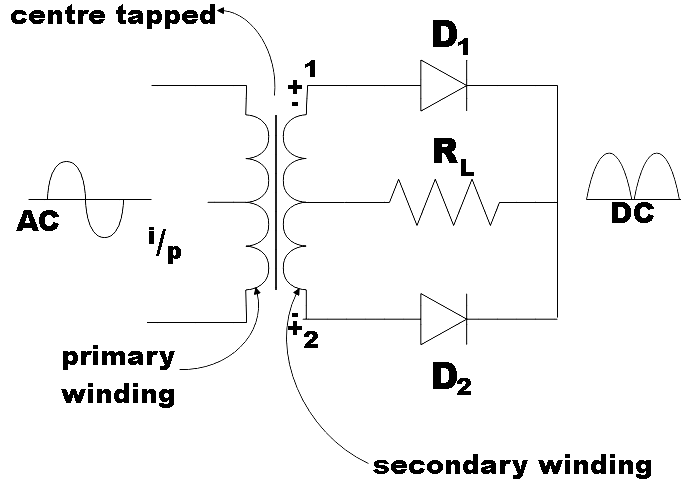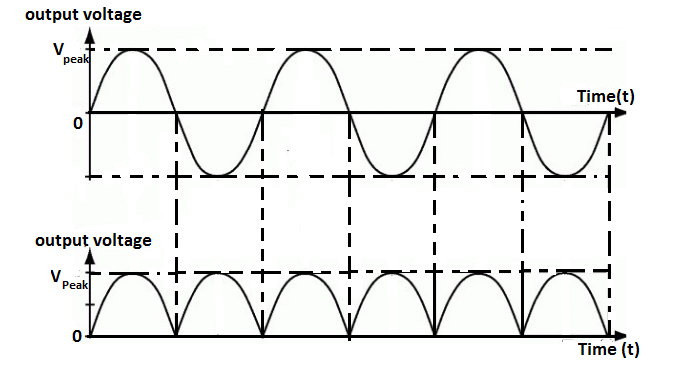
If a full wave rectifier circuit is operating from
Answer
471.9k+ views
Hint: A circuit which converts alternating current into direct current is known as rectifier. A full wave rectifier produces output for both positive and negative half cycles of input. Hence, we get twice the input value at the output terminal.
Formula used:
Complete answer:
A full-wave rectifier rectifies the negative component of the input voltage to a positive voltage, and converts the AC input into DC. In a full wave rectifier, when the AC voltage is applied at the input, during positive and negative half cycles, current flows through the load in the same direction. And it is achieved by using diodes. For


Figure shows the input and output voltage graph of a full wave rectifier. For positive and negative half cycles, a positive output is generated across the load resistor.
Hence, if
i.e.,
Here, the full wave rectifier circuit is operating from
Answer is option D.
Note:
Compared to a half wave rectifier, full wave rectifiers have higher rectifying efficiency, as they convert AC to DC more efficiently.
Since, no voltage signal is wasted in the rectification process; these rectifiers have low power loss. Its output has fewer ripples compared to half wave rectifiers. This makes it easier to produce a smooth output waveform.
Formula used:
Complete answer:
A full-wave rectifier rectifies the negative component of the input voltage to a positive voltage, and converts the AC input into DC. In a full wave rectifier, when the AC voltage is applied at the input, during positive and negative half cycles, current flows through the load in the same direction. And it is achieved by using diodes. For


Figure shows the input and output voltage graph of a full wave rectifier. For positive and negative half cycles, a positive output is generated across the load resistor.
Hence, if
i.e.,
Here, the full wave rectifier circuit is operating from
Answer is option D.
Note:
Compared to a half wave rectifier, full wave rectifiers have higher rectifying efficiency, as they convert AC to DC more efficiently.
Since, no voltage signal is wasted in the rectification process; these rectifiers have low power loss. Its output has fewer ripples compared to half wave rectifiers. This makes it easier to produce a smooth output waveform.
Recently Updated Pages
Master Class 12 Business Studies: Engaging Questions & Answers for Success

Master Class 12 English: Engaging Questions & Answers for Success

Master Class 12 Social Science: Engaging Questions & Answers for Success

Master Class 12 Chemistry: Engaging Questions & Answers for Success

Class 12 Question and Answer - Your Ultimate Solutions Guide

Master Class 11 Economics: Engaging Questions & Answers for Success

Trending doubts
Draw a labelled sketch of the human eye class 12 physics CBSE

a Tabulate the differences in the characteristics of class 12 chemistry CBSE

Which one of the following is a true fish A Jellyfish class 12 biology CBSE

Why is the cell called the structural and functional class 12 biology CBSE

Differentiate between homogeneous and heterogeneous class 12 chemistry CBSE

Write the difference between solid liquid and gas class 12 chemistry CBSE




